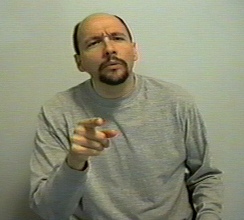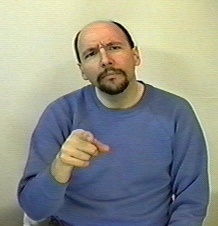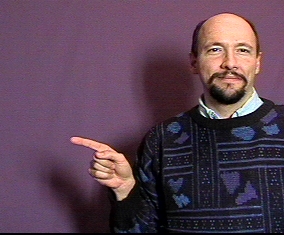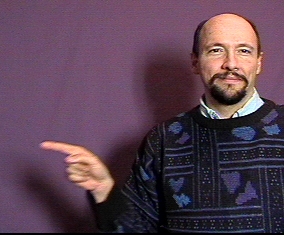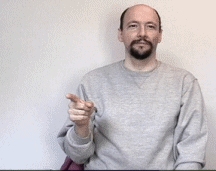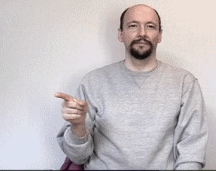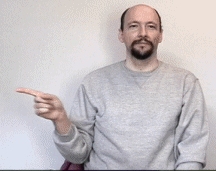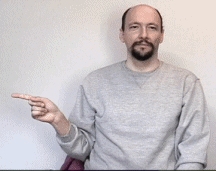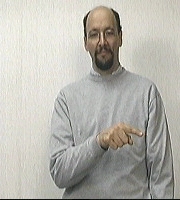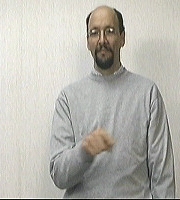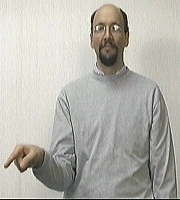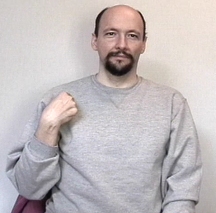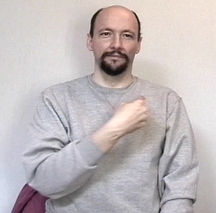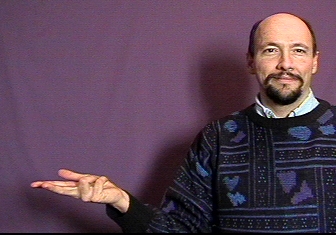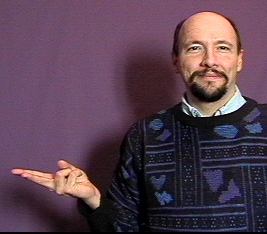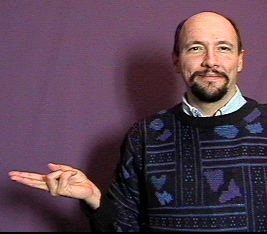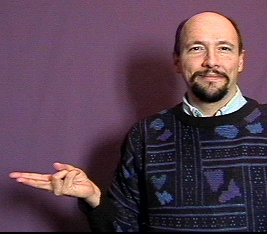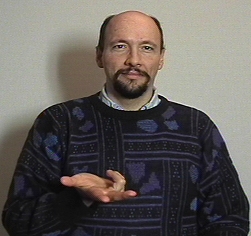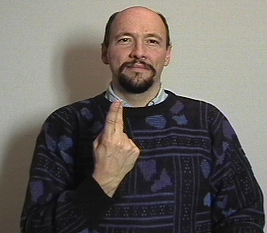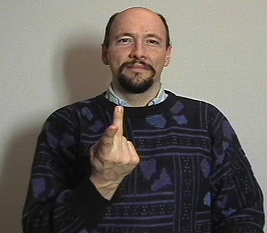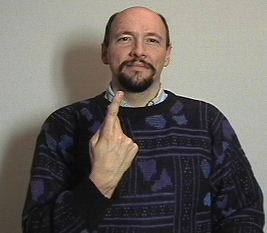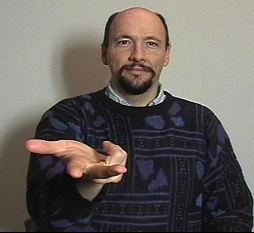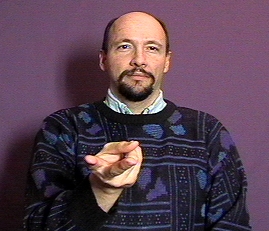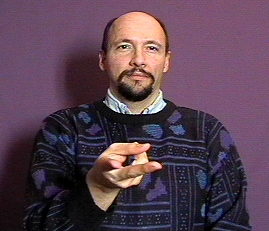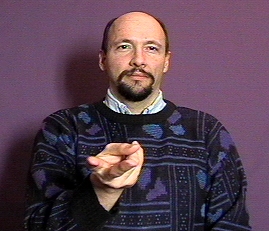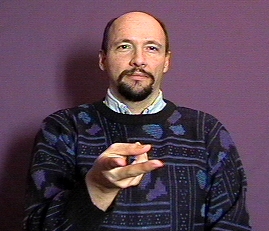ASL: Indexing
Also see: "indexing or pointing"
Indexing is when you point your index finger at a person who is or isn't in the signing area. Sometimes we call that "present referent" and/or absent referent.
If the person is there, (present) you can just point at him to mean "HE" or "SHE." You can point at an object to mean "IT."
If the person is not there, you can identify him by spelling his name (or some other method of identification--like a "name sign," or maybe someone else has spelled his name, or he was sitting in a chair and then got up and left), then you can "index" him to a point in space. Now you have a referent for that person. Once you have set up a referent, you can refer back to that same point each time you want to talk about that person.
In American Sign Language, the index or forefinger handshape is used to indicate the pronouns "me," "you," "he-she-it," "we," "you-all," and "they." (Some people just fingerspell words like "SHE, HE, THEY..."
To sign "me" you just point at yourself or touch your index finger to your chest.
To sign "you" you just point at the person you are talking to.
Here are two examples of "you" as part of a "wh" question: (For example, "Who are you?)
To sign "he, she, or it, you just point at him, her, or it.
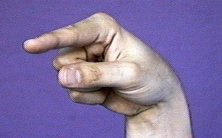
To sign "they" you either point at the group or you point off to the right and sweep farther to the right.
Remember:
Pointing the index finger at a person or thing within the communication area is the form of the space present referent principle.
Pointing at a person or thing that isn't there is an example of space absent referent.
To sign HE / SHE / or IT
Just point! Generally you point off to an arbitrary spot on your right. If the person, place, or thing you are referring to is within view just point directly at him, her, or it.
THEY/THOSE/THEM: Use a small sweeping movement off to your right.
THESE: Notice "these" are closer than "those."
Single sweeping movement.
WE / US:
Those three:
The sign THOSE-THREE uses a "3" handshape (thumb, index, and middle finger) and makes a very small horizontal circle in the air (or a side to side horizontal movement.
THOSE-TWO:
The sign "THOSE-TWO" uses a "K" handshape (or a "V" as I'm showing here) and points at the two people to whom you are referring. The movement is a little sideways shake.
WE-THREE
Done near the body.
Small circular movement (horizontal)
YOU and ME
"The three of you."
Done farther out from the body.
Small circular movement (horizontal)
"The two of you."
No circular movement, but rather a side to side movement generated by the wrist.
DISCUSSION / optional reading:
Heather: Is there a difference in the signs he/she?
Dr. Bill: In ASL, HE/SHE use the same sign, you just point with an index finger. There
are some Signed English versions that use different forms, but ASL just points.ASL uses other methods to establish male/female status. For example I would say, "NOW-NIGHT, MY WIFE COME," which could mean, "My wife is coming tonight."
After establishing "WIFE" I could point to a "generic" area off to my right to mean, "she" or "her." Then, during the same conversation I could point to that same area in space again and again each time I want to refer to my wife.
This is called "absent referent." The person I am talking to would remember that area in space refers to my wife. It is really a simple system because I can set up other areas in space for other people using the same technique. Just name them and point to an absent referent. One bit of caution though, don't overdo a good thing, and remember next week I can't just walk up to my friend, point into the air, and expect him to recall who I'm talking about. You need to spell out the person's name or otherwise identify the person each time you start a new conversation. It is the same way you use pronouns in English.
In a message dated 2/17/2005 5:01:22 PM Pacific Standard Time, poeticjustice72182@_____ writes:
Dr. Vicars,
First of all I want to say thank you for providing this resource. Lifeprint is the only site I've come across that has a truly comprehensive and well-paced "lesson" structure that actually endeavors to *teach* sign language rather than just trying to burn a bunch of signs into your head. I do however, have one question, in reference to indexing.
As I understand the process of indexing, you're sort of setting up a "spatial pronoun", letting a point in space represent the object or person in question? *My* question then has to do with how and *when* you would make that association...
Let's say for instance that I wanted to say:
"Jim and I went to the store. While we were there, he was flirting with the cashier."
My question, is when and where would you index "Jim" in this sentence, so that you could use that point of reference for "he" later on? Right after you fingerspell his name, do you point off to the area in space you want to use? And is there a rule as to where you'd point off to?I have a feeling that I'm overcomplicating things a bit, but I'd appreciate any clarification you could give :-D
Steve
Steve,
You'd sign: J-I-M "WE-TWO-(k-handshape pivot at wrist)" GO STORE. DURING THERE INDEX-(point to right) FLIRT CALCULATOR+AGENT
- Dr. Bill
Notes:
"THIS" points at a certain thing, or at a spot in front of you.
"THESE" points at the things to which you are referring using a sweeping movement. Sometimes you will hold up your non-dominant "5" hand and use your dominant index finger to do a sweeping movement as you point at the digits on the "5" hand. If the items to which you are referring are within sight you will generally just point at the items. If the items form "a single group" then you can use the sign "THIS" to point in the direction of the group.
Also see: ..\pages-signs\i\indexing.htm


